Our youngest students are surrounded by friends, warmth, and beauty in joyful spaces that feel like home. Our Waldorf Early Childhood programs serve children ages 3 to 6 years old. To meet the needs of our families, we offer morning-only or full-day options, with the addition of our Aftercare program. For Preschool students, flexible schedules are available -- from two days to five days.
Our nurturing, enriching Early Childhood classrooms are led by trained Waldorf educators, certified through Waldorf Early Childhood Association of North America (WECAN).
Mixed Age Programs
Preschool
Ages 3–4 years*
8:30 - 12:30
2-Day , 3- Day or 5-Day Program
Kindergarten
Ages 4–6 years*
5 Day Program 8:30 - 12:30 (TK and Kinder)
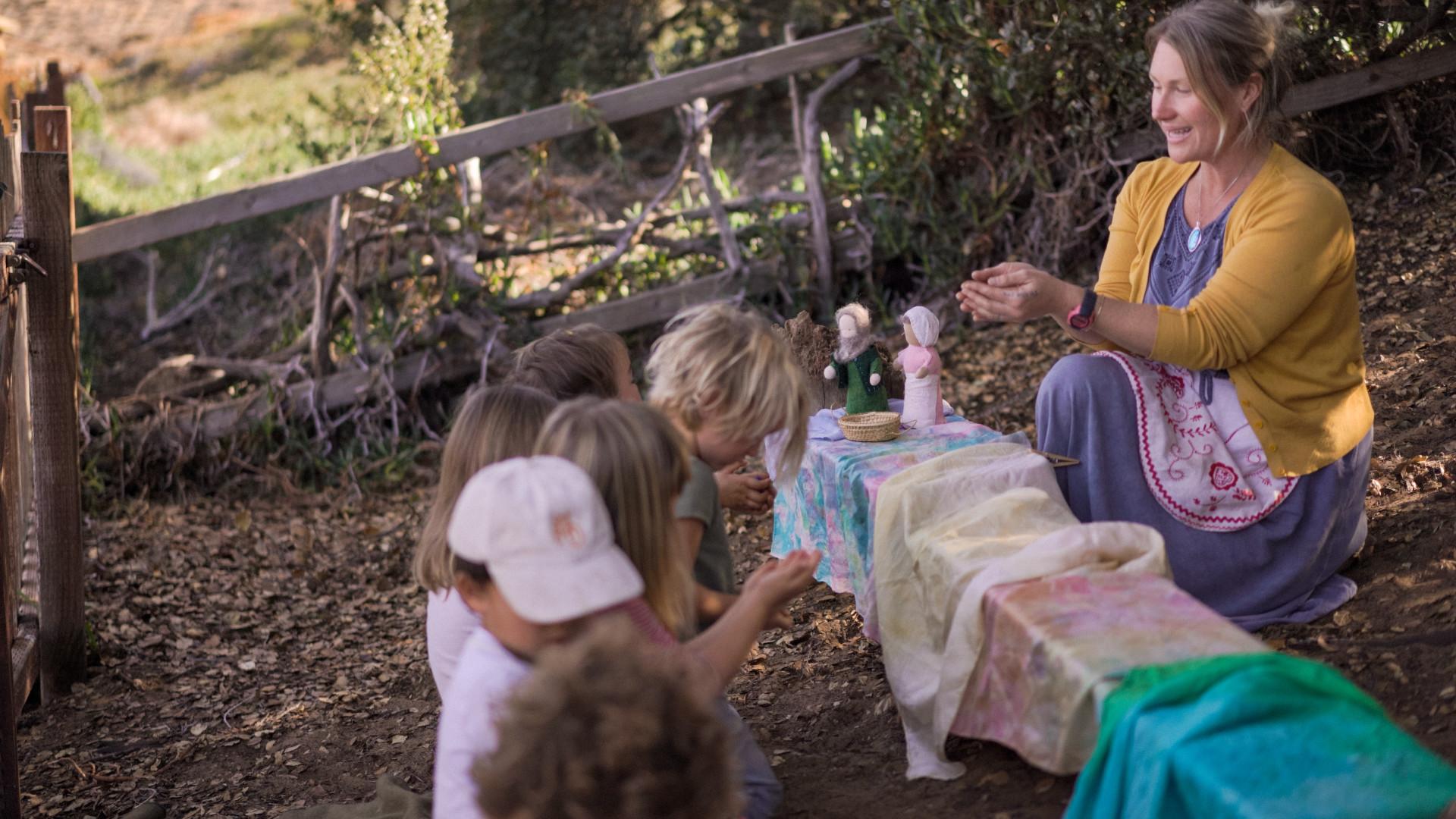
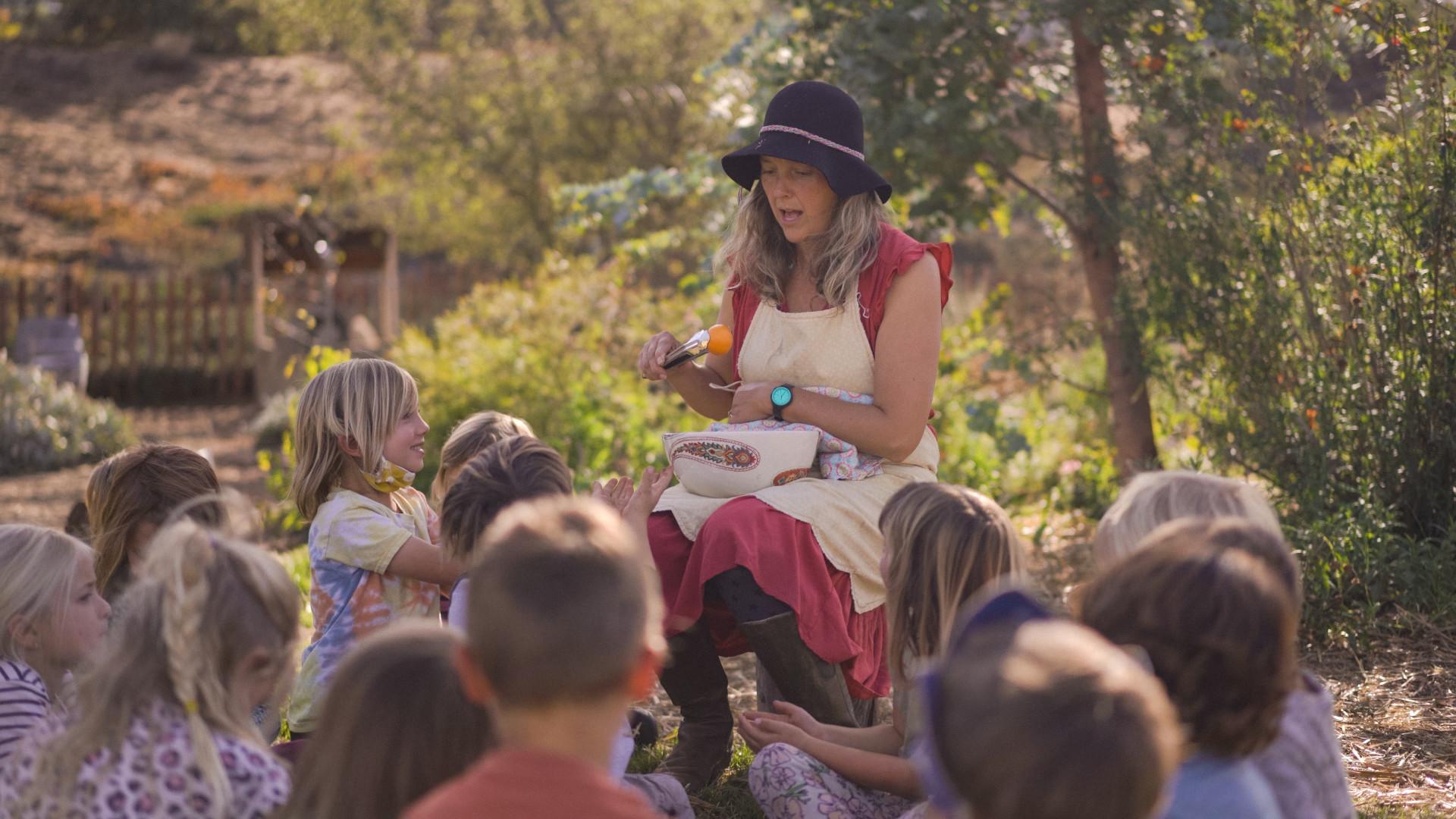
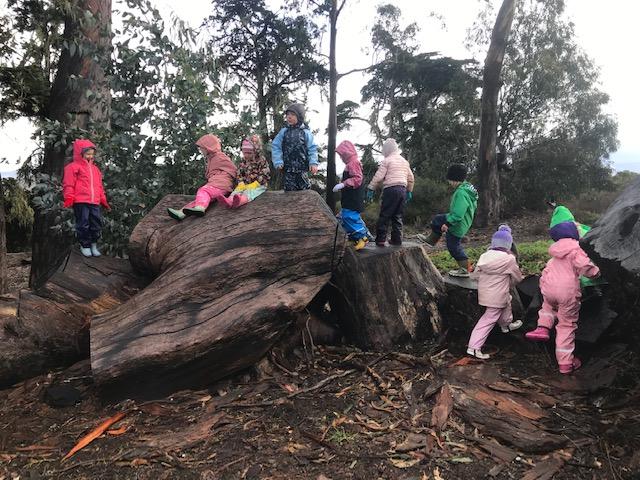
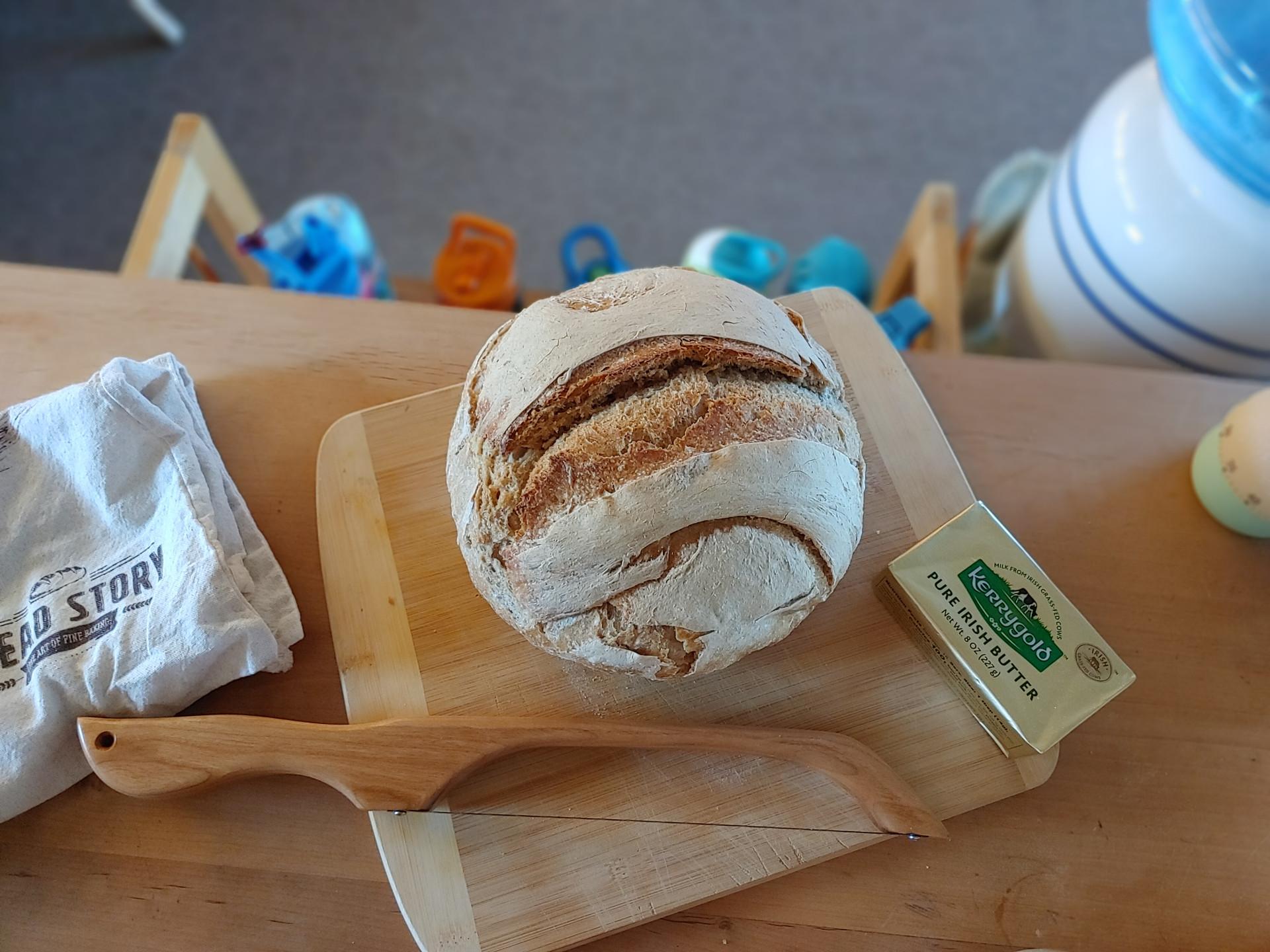
Preschool/Kindergarten
Young children learn about the world through imitation and example. Together, as teachers and parents, we take care that our actions, the environment, and the activities are worthy of imitation. A carefully selected rhythm, alternating between structured and unstructured activities, throughout the day include: imaginative play, artistic activities, singing games/circle time, storytelling & puppetry, nature experiences, and multicultural holidays and festivals. The activities are planned and designed to help the child develop their small/large motor movements, their language acquisition, and their relationships with other children and adults.
The rhythmical nature of the day and the activities themselves form the foundation for discipline in the preschool/kindergarten. When students feel that their environment is safe and reliable, where expectations are clear and consistent, they come into ease and behavior challenges are minimized. Furthermore, the teacher guides the child to help develop and navigate social skills throughout the day. Circle time, activities, and celebrations follow a yearly rhythm based on the natural progression of the seasons.
Importantly, the Preschool / Kindergarten curriculum forms the basis for later academic learning and success. The foundations of written language and literacy are laid at this time, with an emphasis on the oral traditions of storytelling, puppetry, and song. The foundations of mathematics are nurtured through rhythmic movement, music, and the practical activities of cooking, sewing, gardening, and carpentry. Attention to, and care of, the natural world and its beauty lay a healthy foundation for more precise scientific explorations in the later years. The Early Childhood emphasis on "purposeful work" and willful play establishes the needed skills of focus, perseverance, and commitment for completing lessons and school work in the Grades and beyond.
The Environment
Our Early Childhood classrooms offer a joyful, nurturing setting that inspires the imagination, respects nature, and honors play. The “magic” of childhood is preserved through an atmosphere of beauty and wonder. The classroom is set up to encourage imaginative play and allow the child full reign of creative and individualistic expression. Open-ended toys and equipment of natural materials are provided to best stimulate the child’s senses and imagination. These classroom objects include: basic blocks, things gathered from nature (shells, acorns, stones, etc.), wooden toys (play kitchen, boat, animals), soft knit animals, cloth dolls, play silks, dress-ups and more. These simple materials are chosen to allow the small and large motor skills to develop organically, thus laying the foundation for later academic learning.
Artistic Activities
Participation in an artistic process engages the child on many different levels. Small and large motor skills are developed, as are decision-making competencies, problem solving and exploring their own creativity. Artistic activities include: music, simple nature crafts, cooking and baking, handwork (sewing, finger knitting, felting), modeling/sculpture, woodworking, and visual arts (painting, drawing, etc.).
Music can be heard throughout the day during Circle Time, transitions, and preparing for and cleaning-up from activities. Through music and rhythm, the foundations for later mathematical concepts are laid, while developing the auditory skill. The domestic arts – crafts, cooking and baking, handwork, sculpting, and woodwork, develop numerous skills thereby building a platform for later academic learning, such as concentration, speech, and thinking. Wet-on-wet watercolor painting is an excellent example of how artistic activities work on the child in a threefold manner. It is an exploration of the medium, exploring colors and how they mix. It involves discovering the emotional quality or nature of the color, which in turn becomes an emotional expression for the child. And, it requires inner control and mastery -- dipping a brush in the paint pot, without spilling their water jar in the process.
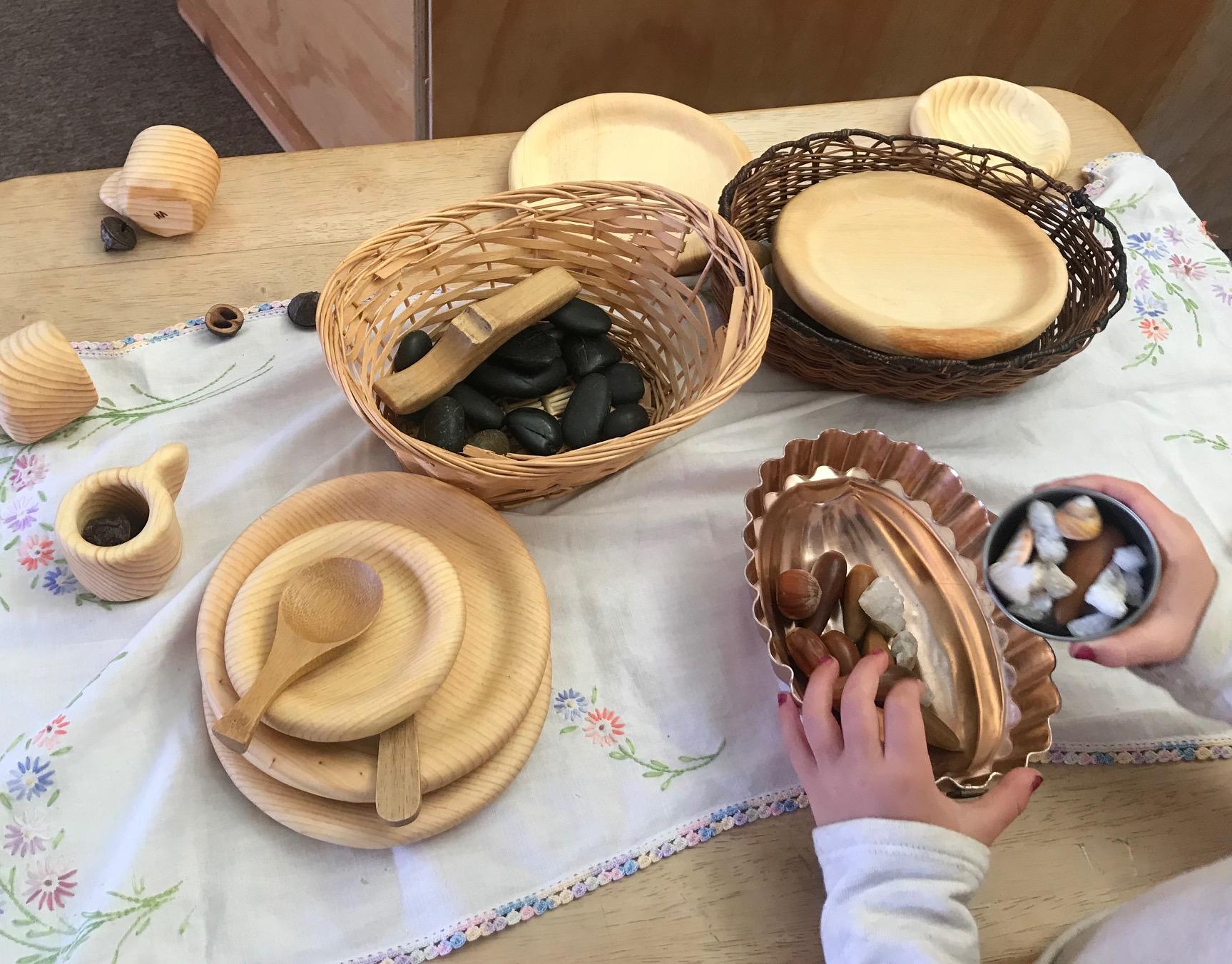
.jpg?v=1674415331179)
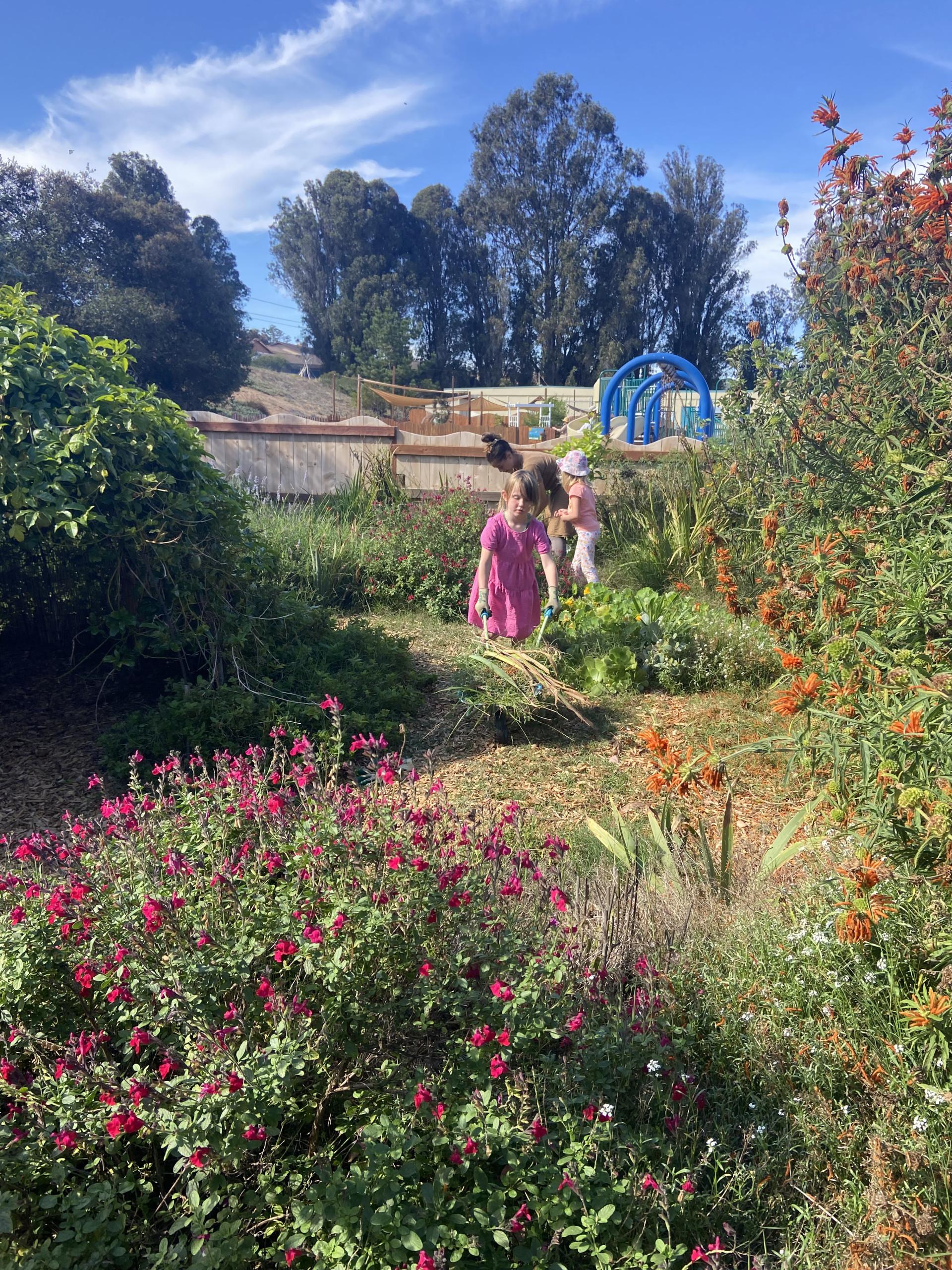
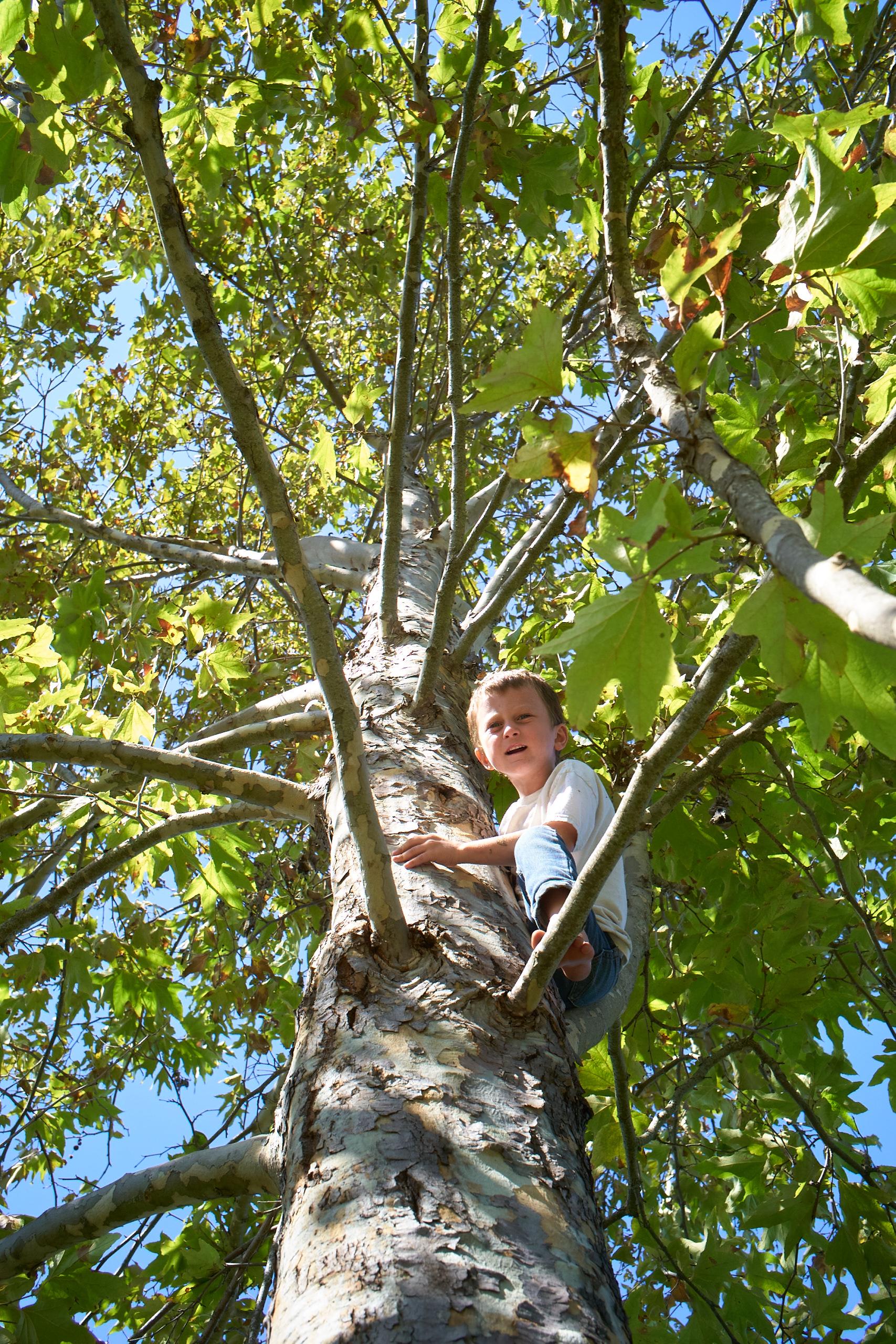
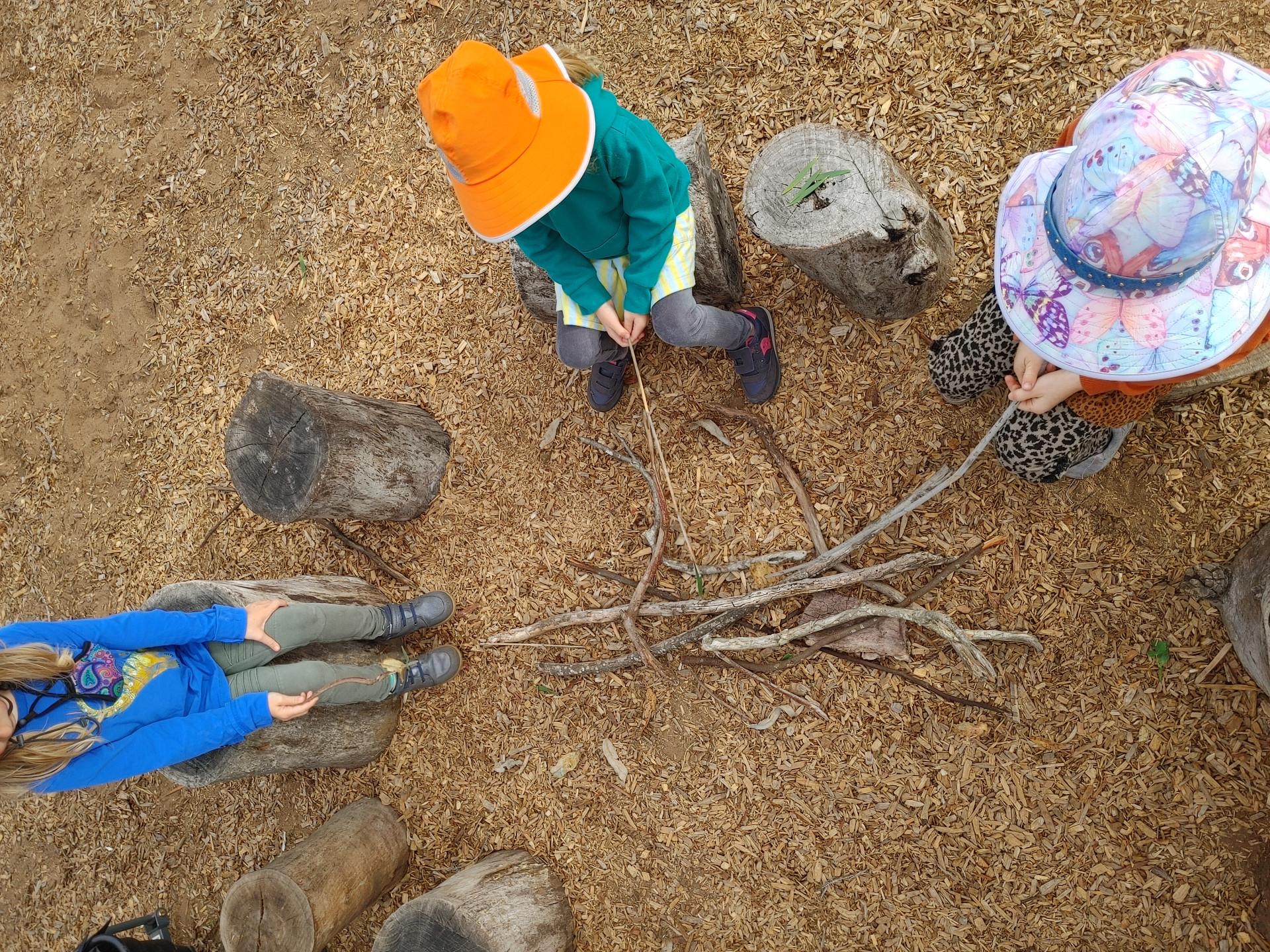
Imaginative Play
Play is the basis of experiential learning. Through play, children interact with and explore the world around them; this engagement brings pleasure. With pleasure comes the drive to repeat the pleasurable activity and with repetition comes mastery. Learning is and should be joyful. The more comfortable children feel with the world, the more likely they will learn and discover new things, conquer their fears, and have enhanced confidence toward challenges. It is through the “experiments” of play that a structure of knowledge of themselves, others around them, and the world is built.
Play is essential to healthy development because it contributes to the cognitive, social, physical, and emotional wellbeing of the child. Through imaginative play, the child explores the use of symbols; this symbolic thinking forms the foundation for later academic learning. When a child pretends a shell is breakfast for their baby or stones are a present, or a ticket, the child is engaging in symbolic thinking, transforming items found in nature into fantasy play.
Moreover, social and communication skills are developed when children create. For example, children discover these skills when they create a birthday party scene, working together to prepare for the party. Imaginative play most often requires the use of problem solving, strategizing, planning to achieve a goal, making choices, and negotiating skills. Play builds the physical body. Climbing a tree or rolling down a hill sharpens reflexes, develops strength, coordination, and balance.
Spanish
Spanish is presented in the form of play and seasonal rhythmic circles with movement, songs, finger games, sensory activities, and puppet shows. At this age, children do not need to notice or know that they are learning “another” language, they simply absorb it, enjoy it, and listen to new sounds that they naturally repeat and produce.
Here, at Wishing Well School, the Spanish teacher joins each classroom, twice a week, and offers a unique Spanish circle and story.
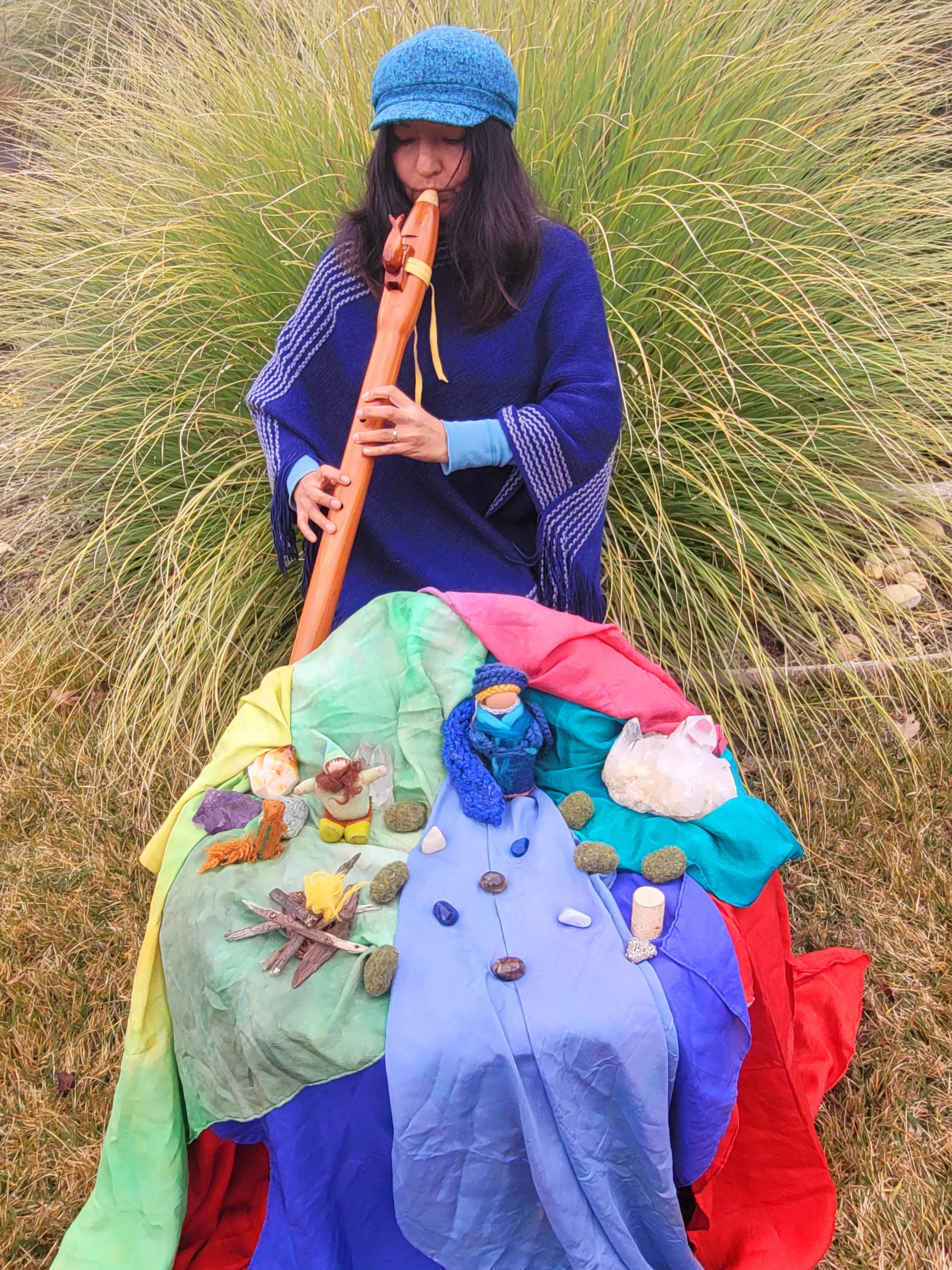
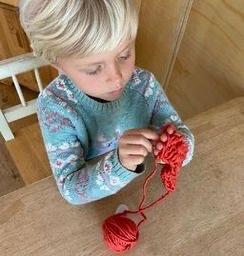
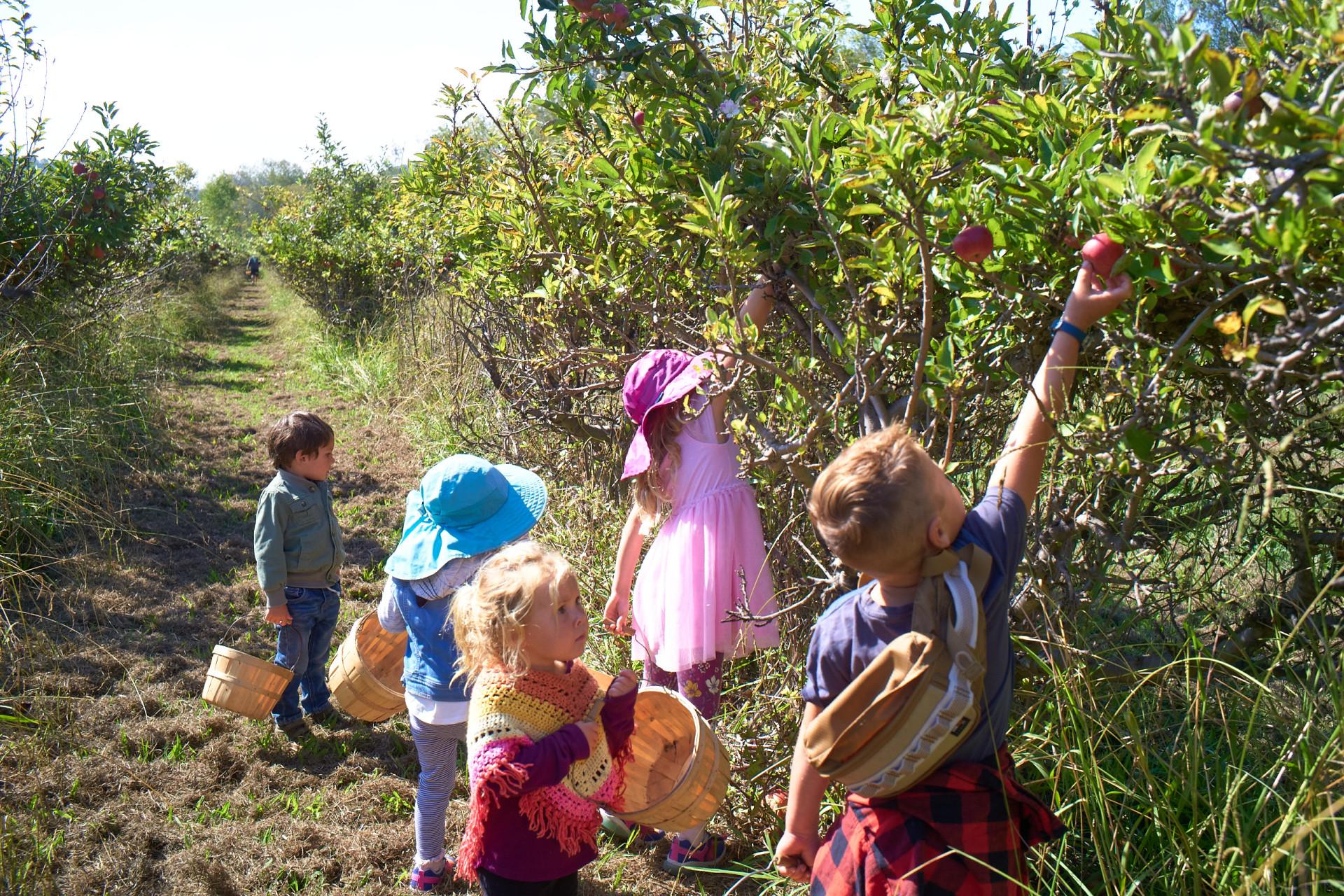
Circle and Story Time
Fairy tales, classical stories, puppet shows, verses, nursery rhymes, finger plays, singing games, and circle time bring a rich array of opportunities for growth and development to the child. These activities expose children to rich language as they develop listening skills, helping children recognize sounds, rhythm in words, and rhyming schemes in verses.
All of this lays the basis for the understanding of phonics, as well as the beginnings of reading and writing. Oral listening skills build language, competence in grammar, memory, essential attention and focus capacities, and visualization. These are crucial skills in developing literacy and the healthy habits that are needed of any thriving student in a classroom, which will be critical later as they enter the Grades.
Waldorf employs the threefold method of story telling: the child hears a story for one week (auditory); the same story is repeated the next week (visually) with a puppet show; lastly, the children dress up and act out the story for the third week (kinesthetic).
Nature Exploration
Each day the child has the opportunity to experience the natural world through nature walks, “backyard” experiences, and gardening/outdoor work. The child learns about the natural world by exploring nature firsthand; these observations, discoveries, and explorations are the foundation for later scientific discovery. This gives the child the whole picture, so that later they can have a connection and lived experience of the importance of all the details.
The young child is so new to being and their human journey, making the natural world the most appropriate first “classroom” and teacher. Young children are uniquely in harmony with seasonal changes and outdoor life. Seasonal songs, stories, and crafts introduce different aspects of nature into the child’s imagination, awakening the child’s senses to the world around them. Planting in a school garden teaches about the seasons, plant growth (seed/bulb to vegetable/flower), and soils. General tending to the school community space gives the child an opportunity to engage in purposeful work, as well as experience responsibility toward themselves and others, an important part of the whole.
The outdoor space, with a multitude of different opportunities to stimulate the senses (sand, dirt, wood chips, grass, rocks, trees, plants, flowers, bugs, butterflies, birds, and much much more), provides a healthy setting from which to explore and to build an understanding of oneself and the natural world.
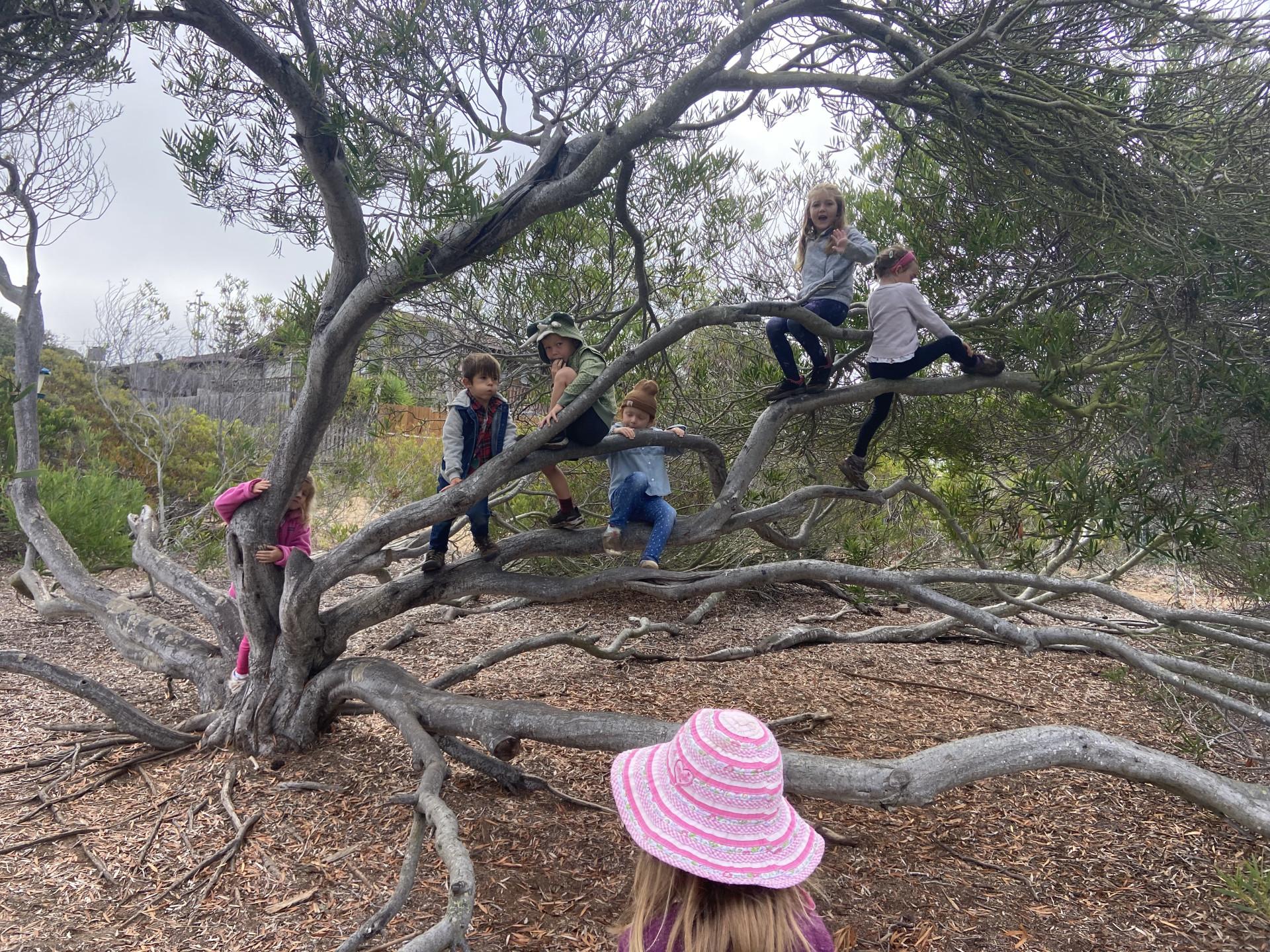


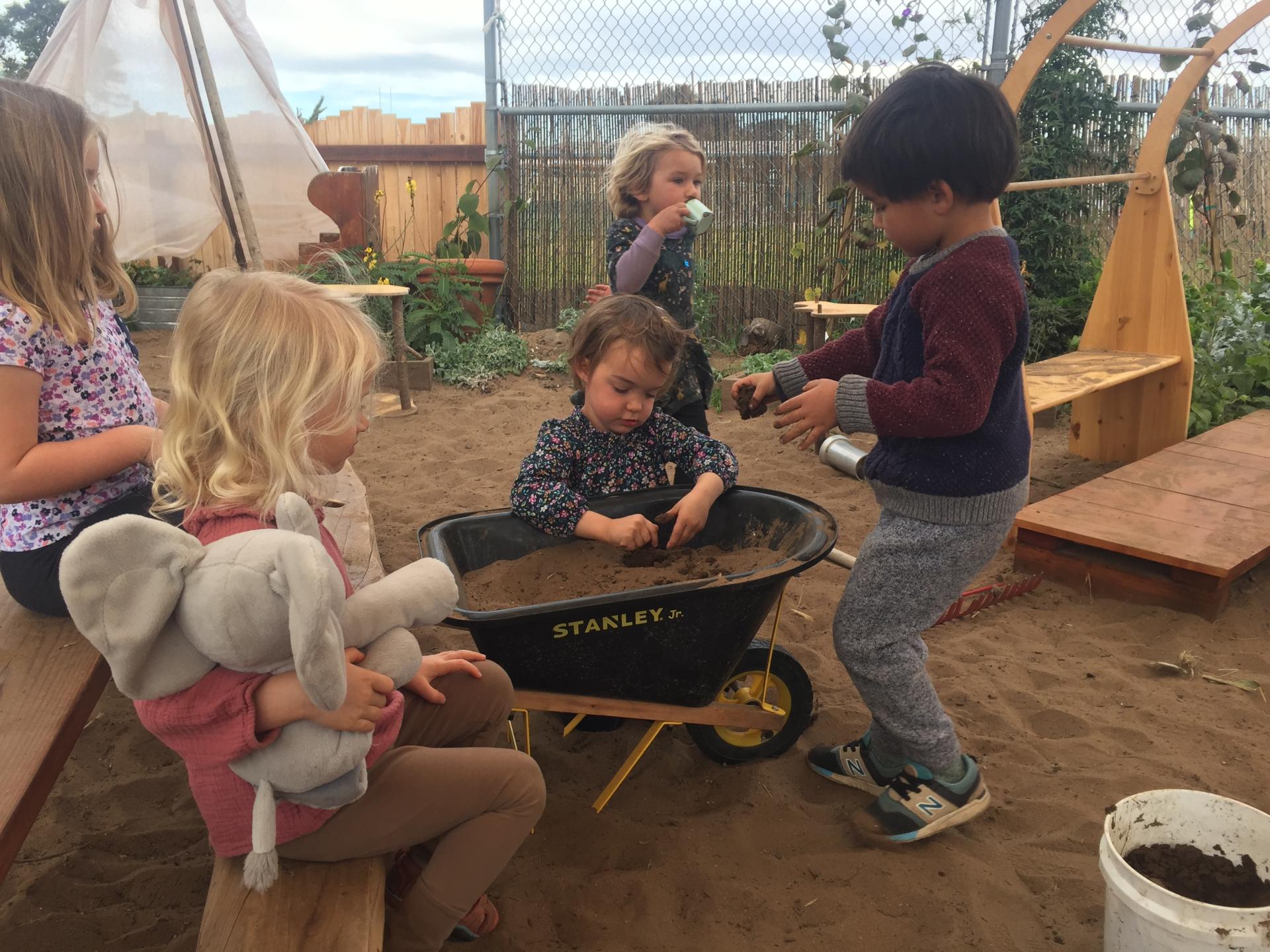
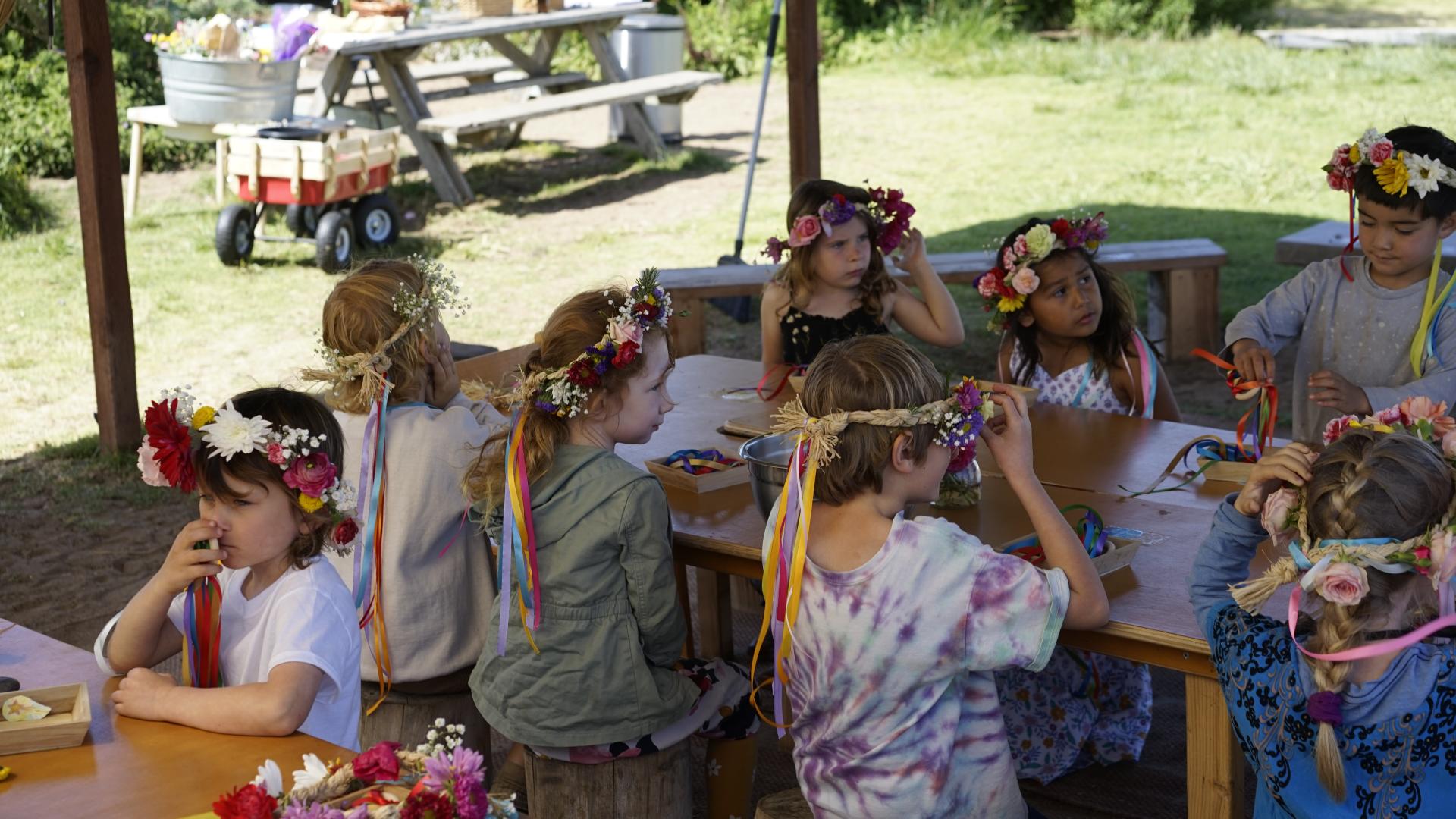

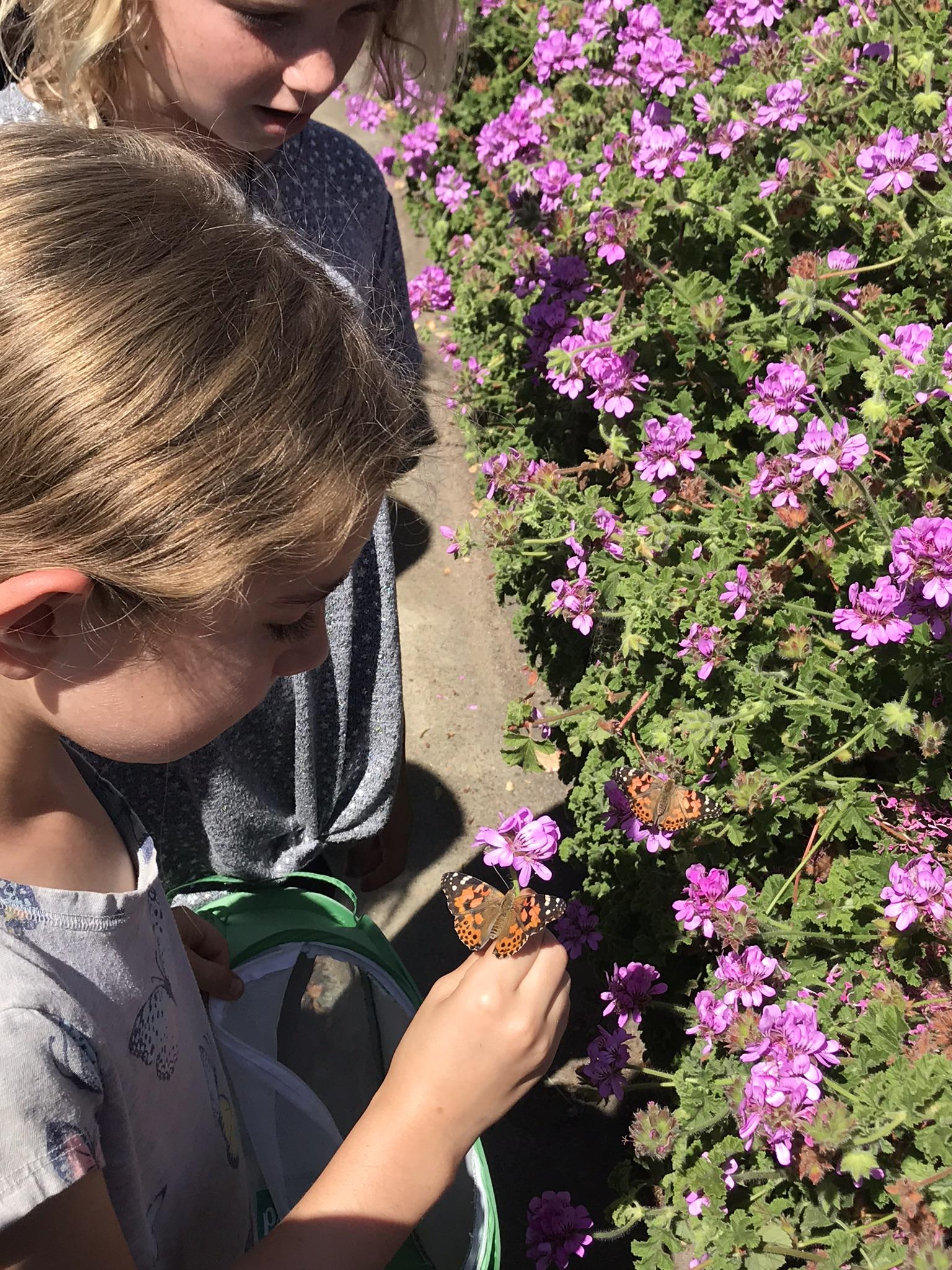
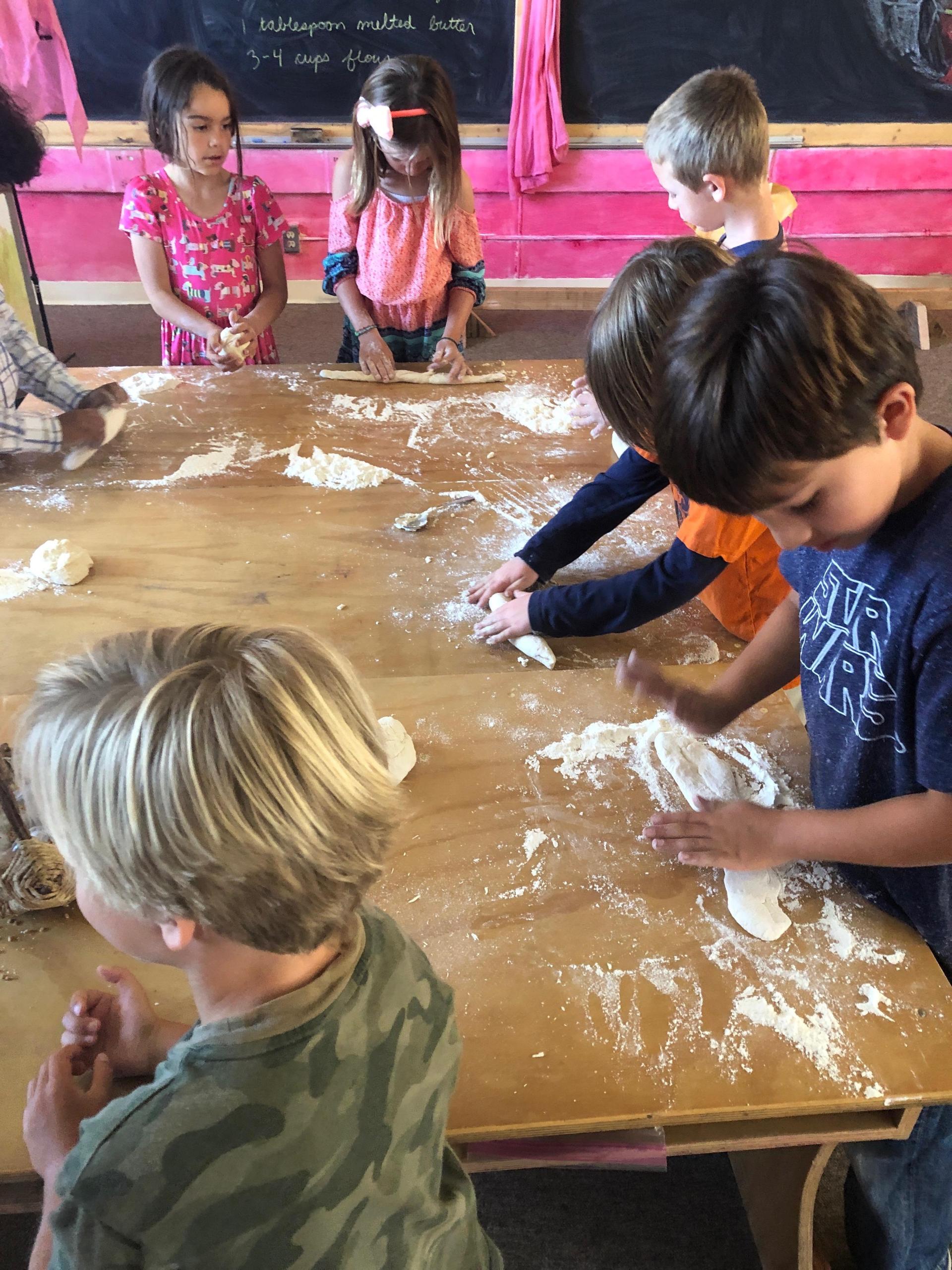
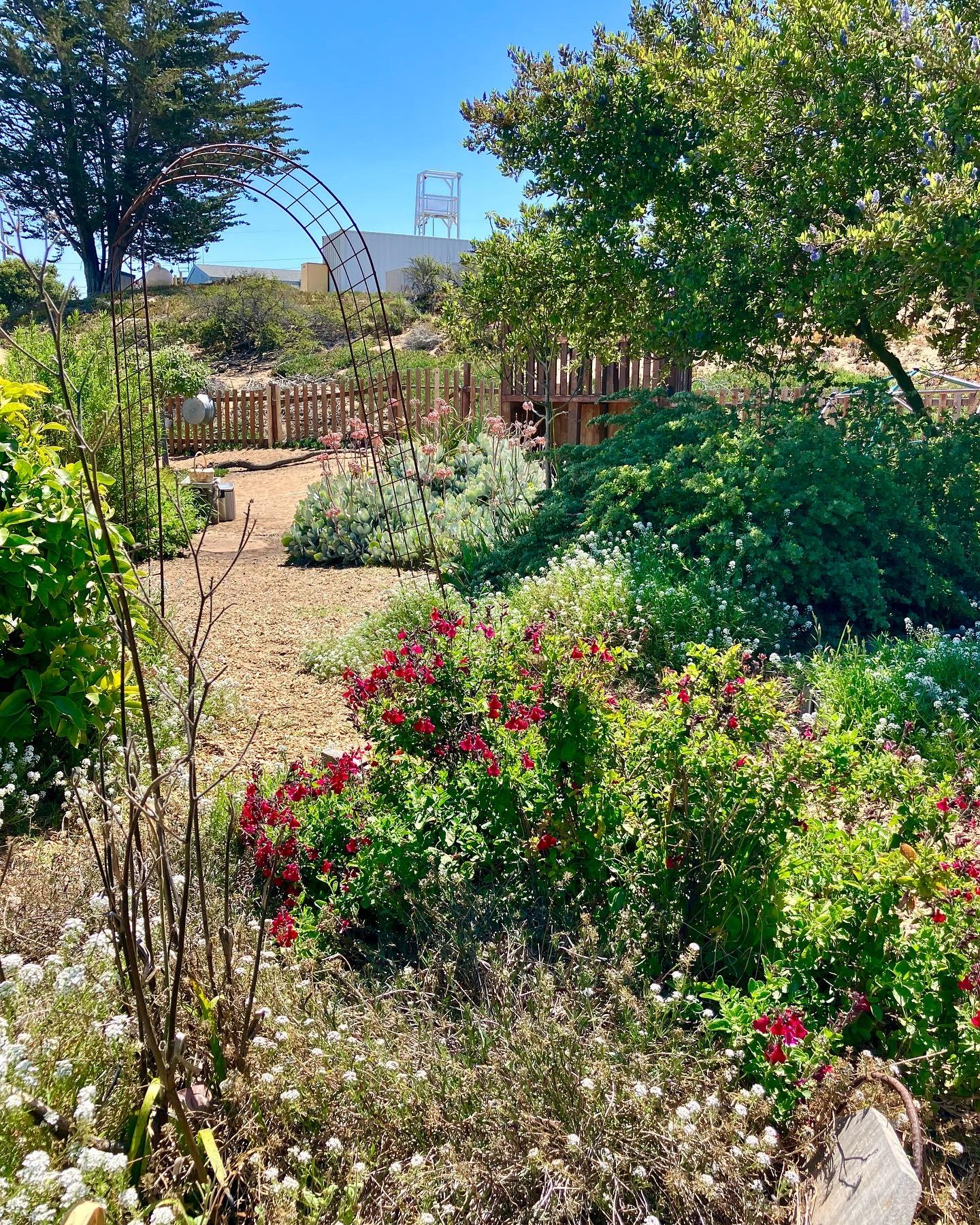



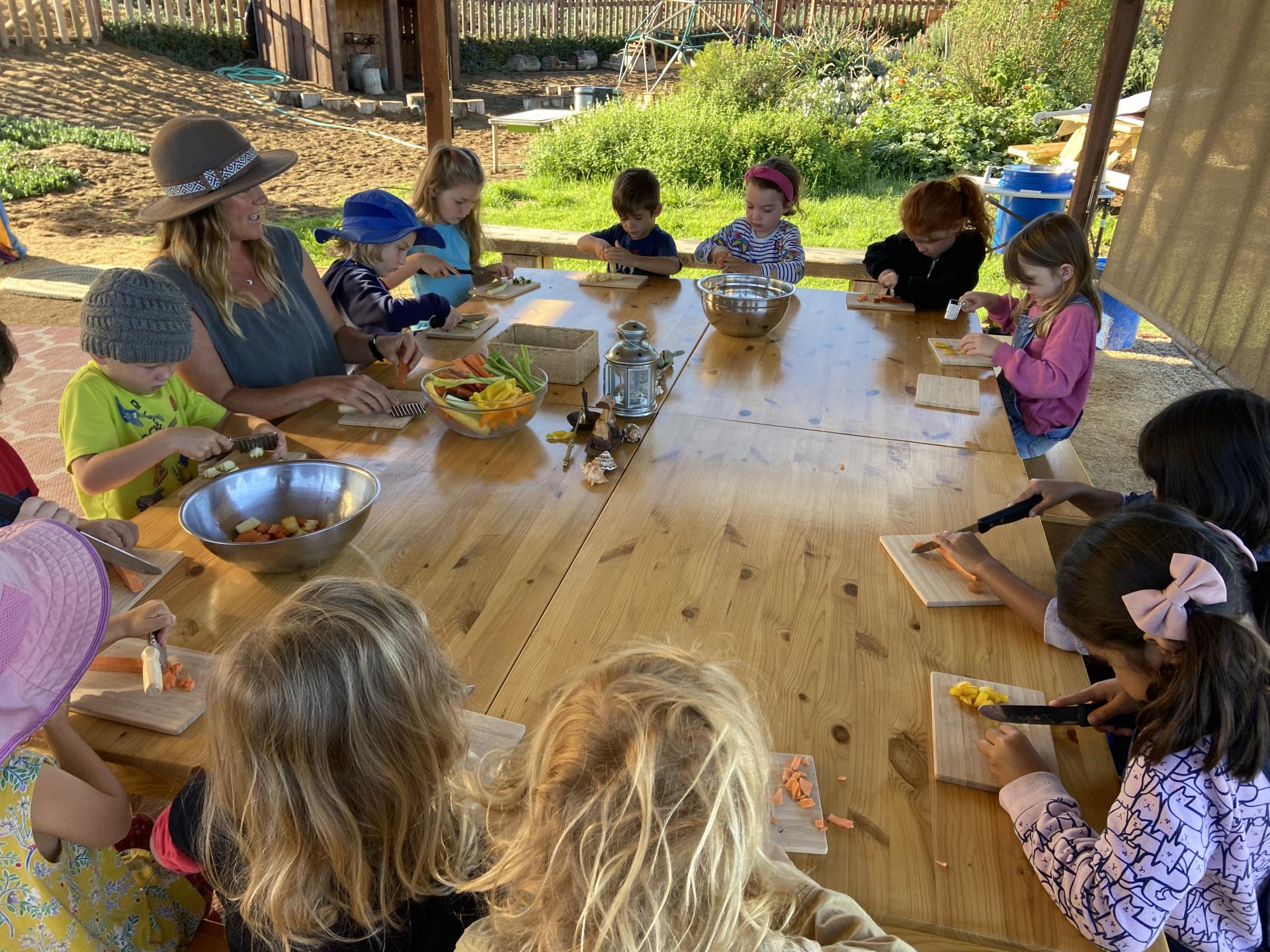
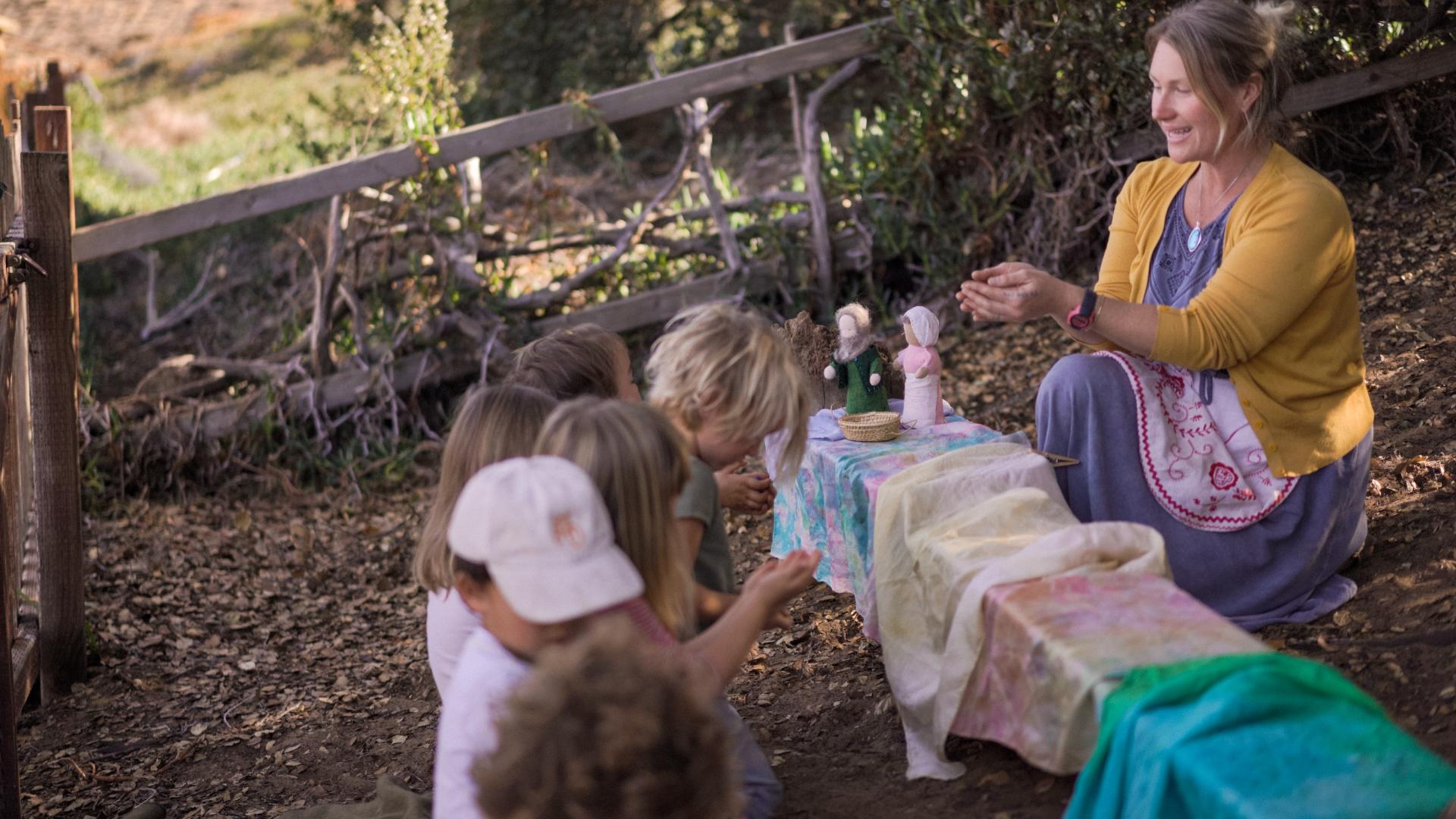
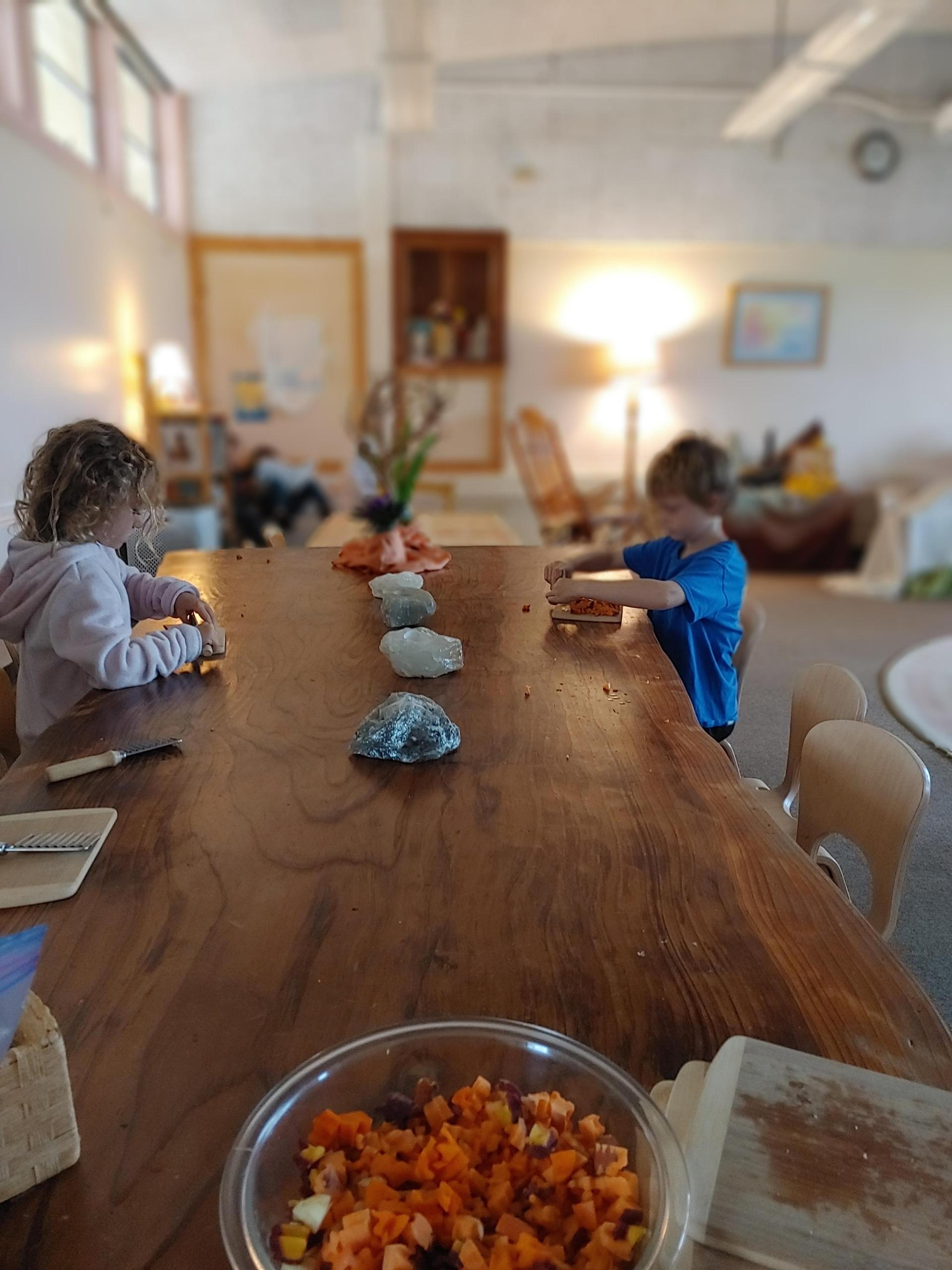
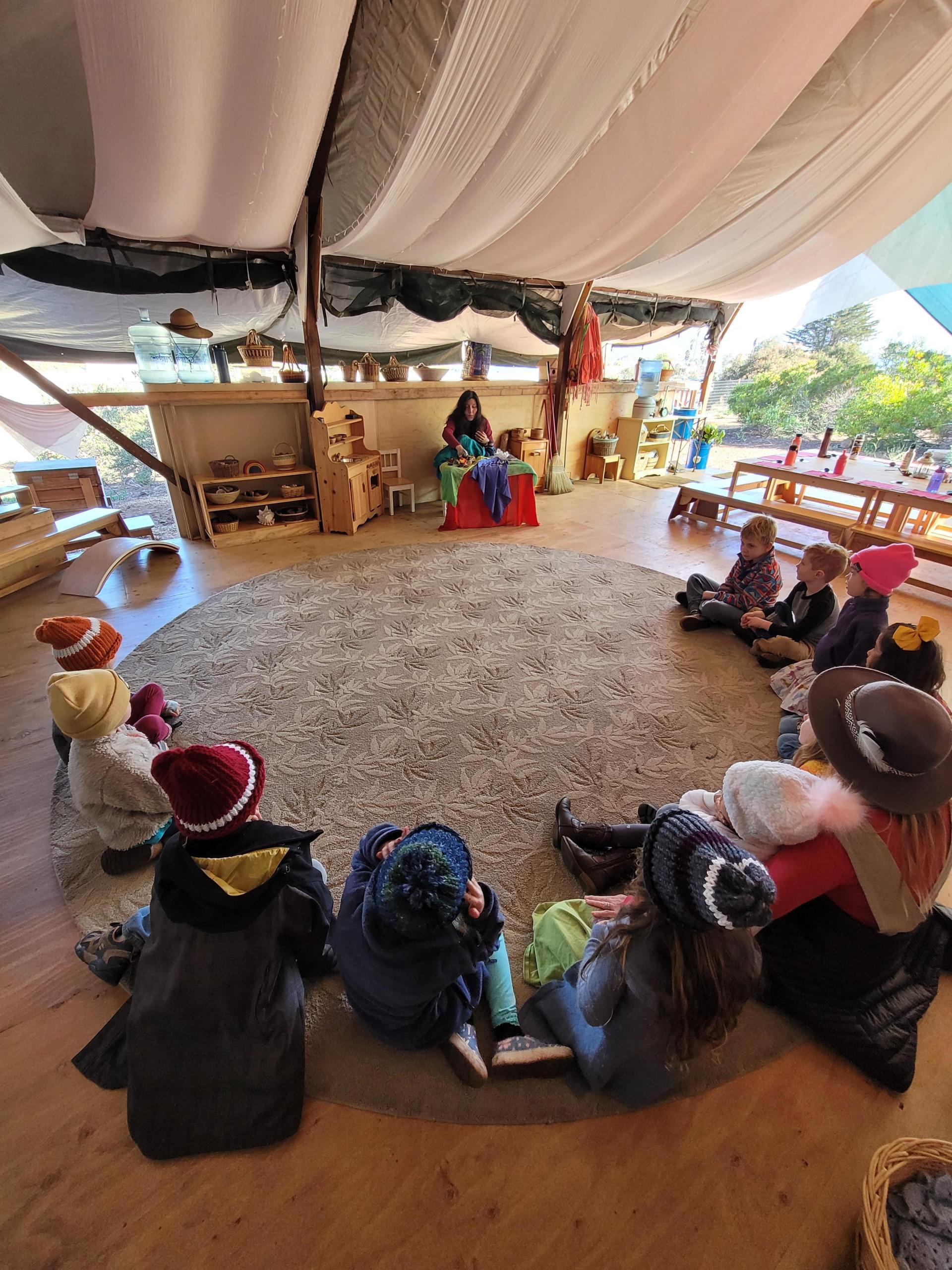
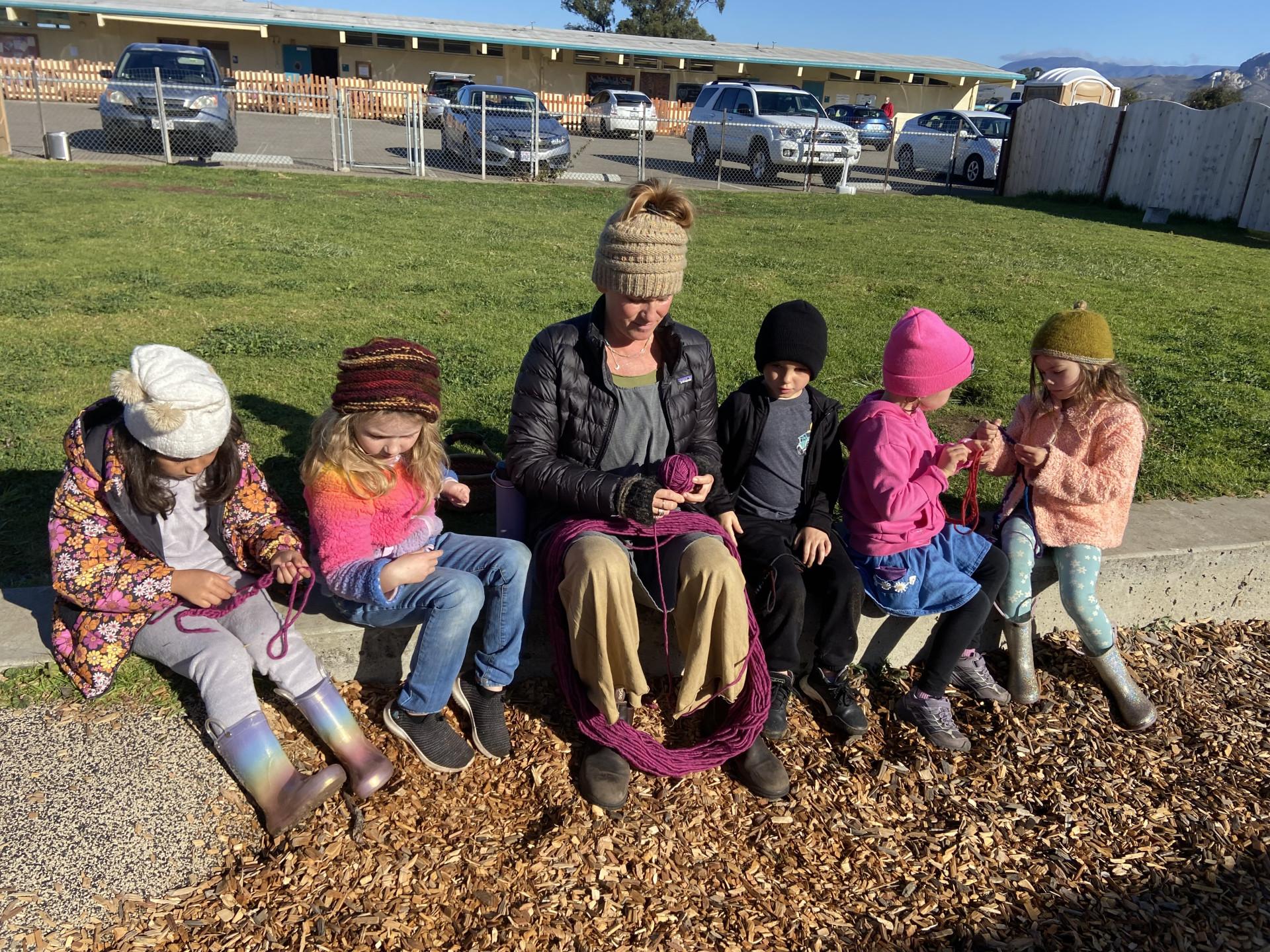
.JPG?v=1674375956145)
.JPG?v=1674375758517)


